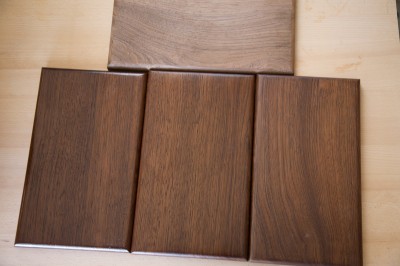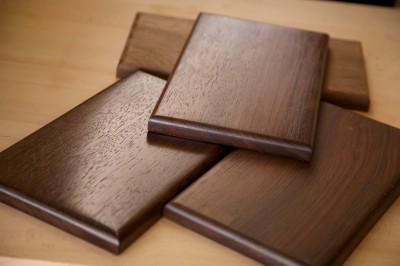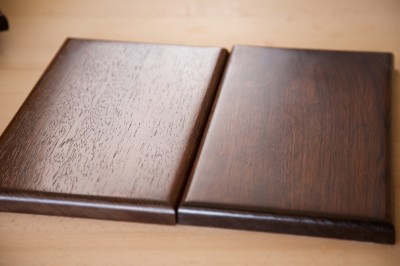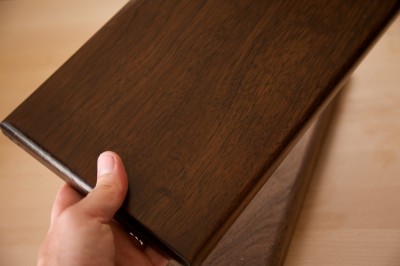Tropical walnut might be a new wood to you, and that’s okay. This is a type of walnut that grows in Ecuador, Peru and Colombia, and happens to be a close relative of American black walnut. The two woods have similar color, hardness, and general working characteristics – they’re both rather nice hardwoods to machine with power tools and shape with hand tools.
They have their differences, too. More about Tropical Walnut >>>
Tropical walnut has much more straight grain and less curly/swirly and irregular character. And it also rarely includes any pale sapwood in the lumber, which is unlike American black walnut. It’s increasingly more common for American black walnut lumber to have a fair percentage of light sapwood. That’s not to say one is better than the other; it just depends on your tastes, so we’re here to empower you with some on-the-ground facts about the material. If you like the dark color found in walnut and prefer a consistent straight grain and no pale sapwood, Tropical Walnut might be a good wood for you to try.
The video above will show you a couple of machining operations to give you an idea of how nicely this wood works, but it also demonstrates in detail the specifics of applying two kinds of grain filler and top coat. But here’s a summary of the finishing techniques.
Using the basic, simple wood finishes on Tropical Walnut is a piece of cake. You can apply your favorite polyurethane, lacquer, shellac, or water-based top coat and there’s a good chance you’ll be happy. The wood darkens nicely and you’ll see a bit of the natural contrast pop out a bit. But you can improve both of these by filling the wood grain first.
Of course, you’re the builder and it’s your project. You get to choose what you like best, and the glass-smooth finish you get with a well-filled grain isn’t always the look you want. But it’s a good idea to fill grain for projects like table tops and desk tops, or in any finish in which you’re going for a glossy sheen. Grain filler also adds a little bit of dark color to the wood pores, and that results in slightly greater contrast and visual depth in the wood.
Fill the grain one of two ways:
In all of these cases they’re pretty easy to apply but they do add more time to your finishing process. Of course, good things come to those who put in the time. Take a look.
Click the images to zoom in.

Simple wood finishes look great on Tropical Walnut – frankly they all provide just about the same look, there’s no single best choice. Left to right: wipe-on gel polyurethane, satin lacquer, waterbased acrylic. The horizontal board on top is unfinished so you can see the comparison.

Yes, there’s glare but that’s on purpose. With a little side light, you can see how these basic finishes don’t fill the grain. The dark spots you see are wood pores. Sometimes this kind of finish is just fine. Other times it’s not and filling the grain helps you achieve a very smooth finish.

Now compare. Both boards have 3 coats of satin lacquer. The difference should be obvious. The board on the left has not had the grain filled, whereas the grain in the board on the right was filled before the lacquer was applied.

This is Tropical Walnut with a nicely filled wood grain and a top finish of 3 coats of spray lacquer. But any film-forming finish can go on top. Shellac, wax, polyurethane, varnish, etc
Vice President of Operations – Woodworkers Source
We’re a family-owned lumber & woodworking supply retailer with 3 delightful stores in Arizona, and 35 friendly employees.
Mark oversees the company and creates tutorials on wood finishing and woodworking tips for hardwood lumber.
Woodworkers Source is a division of MacBeath Hardwood Co.
